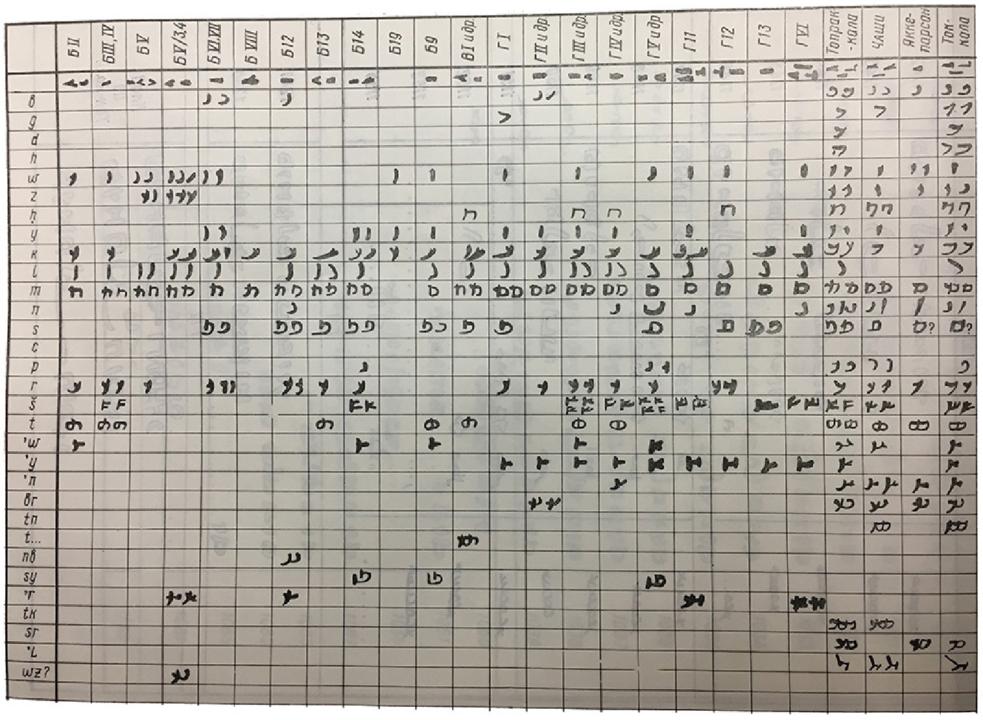“The Chorasmian script was used between the 2nd century and 8th to 9th centuries CE primarily to write the Chorasmian language, an Eastern Iranian language. The script was derived from Imperial Aramaic and is related to Parthian, Inscriptional Pahlavi, Psalter Pahlavi, Book Pahlavi, and Old Sogdian. ” - The Unicode Standard, Version 15.0
Chorasmian


Inventory of characters on Chorasmian coins (БII–ГVI), Toprak Kala (Топрак-кала), Yakke Parsan (Якке парсан), Tok Kala (Ток-кала) (from Vainberg 1977: Table 8)
(from Vainberg 1977: Table 8) Anushman Pandey, Proposal to encode the Chorasmian script in Unicode, 2019
Unicode Chart 

DISCLAIMER: This script is still being researched
Data
| Alternate Names | Khwarezmian |
|---|---|
| ISO 15924 | Chrs 109 |
| Type | Abjad |
| Family | Middle Eastern |
| Direction | RtL, TtB Some inscriptions written vertically with letters rotated 90° counter-clockwise with lines that advance from left to right |
| Glyphs | 28 |
| Inventor | Unknown |
| Earliest Location | Delta of the Oxus (Amu Darya) river (spread across Uzbekistan, Kazakhstan, and Turkmenistan), Also known as Avesta |
| Earliest Date | 100 BCE |
| Latest Date | 1000 CE |
| Ancestry |
|
Overview
Bibliography
| Author | Year | Publication | Publisher |
|---|---|---|---|
| Pandey, Anushman | 2019 | Proposal to encode the Chorasmian script in Unicode | The Unicode Consortium |
| The Unicode Consortium | 2022 | The Unicode Standard 15.0, p. 417, 434 | The Unicode Consortium |